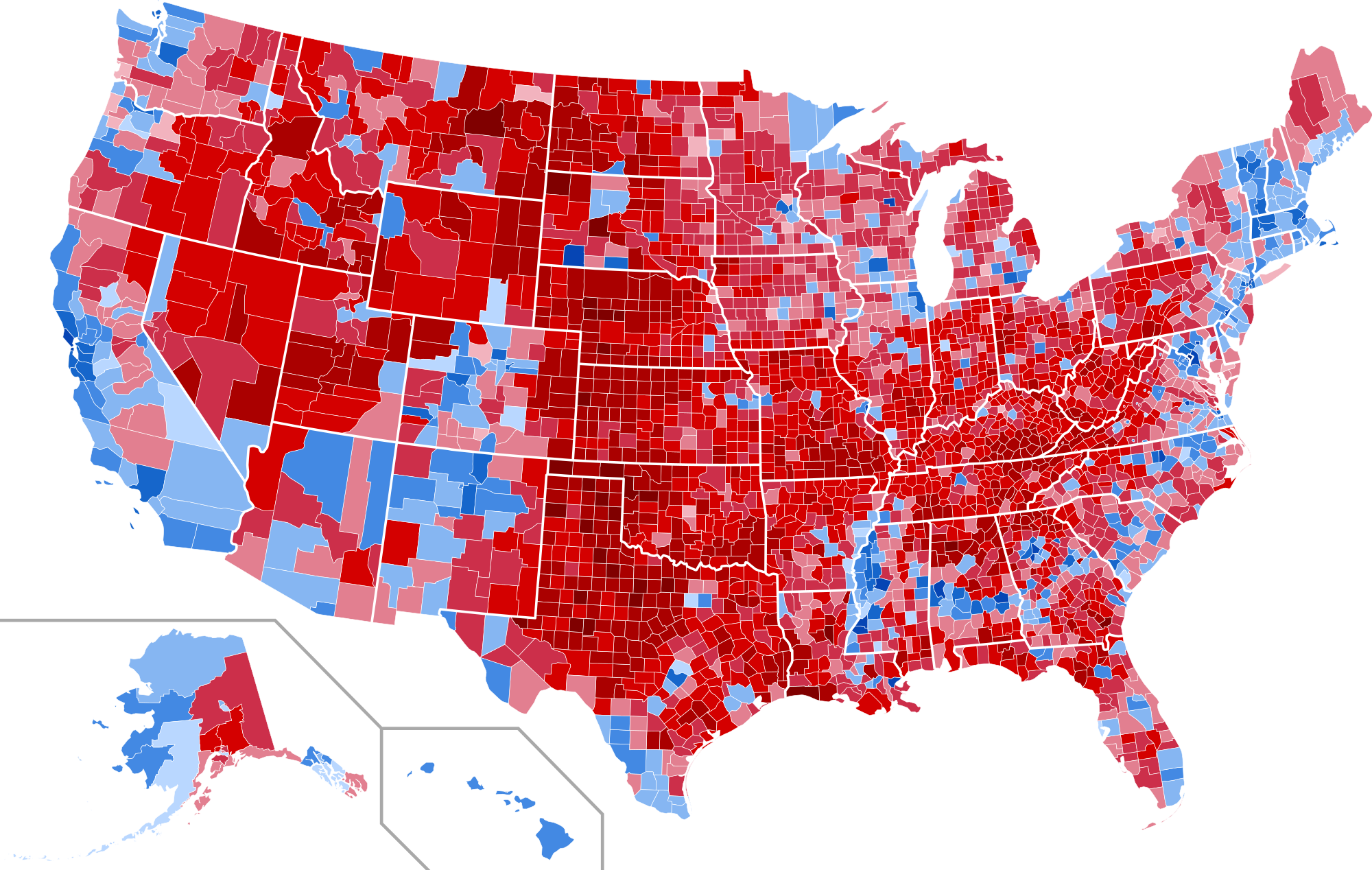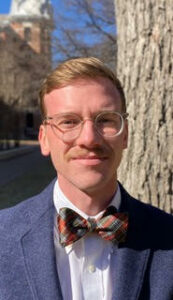Waco, TX. Let me begin this essay with a caveat: I still doubt that third parties in the United States can be viable, and, until a few weeks ago, I was settled in the notion that the peculiarities of American politics require one to work though the uneasy coalition-building demanded by our two-party system. I still hold to the general wisdom of that notion. But recent events—some early actions of the Biden administration that signal little moderation on cultural politics, the general realignment of large corporations to the Democratic Party, the January 6th Capitol riots and Trump’s somehow-continuing vise grip on Republican voters—have convinced me that, for the foreseeable future, it is even less likely than ever before that Porcher politics will contribute much to either the Democratic or Republican coalitions. So the following essay is a thought experiment—admittedly, better called a hunch—about how a third party might make concrete strides toward success in the coming years.
The constraints on third parties in American politics are well-known: winner-take-all elections, the electoral college, absence of ranked voting, gerrymandering, etc. One particular dissatisfaction with electioneering has delighted me somewhat, however: the electoral map of the U.S. that shows a sea of counties voting red interrupted occasionally by zones of blue, mostly on the coasts. 
The reaction is predictable: on the right, rage that so much U.S. geography is domineered by those smaller blue areas on the coasts; on the left, condescension toward this rage that knows little about how populations and geography work. Of course rural voters, who represent a larger share of the land but a smaller share of the population, tend red, and of course urban voters, who are far larger in number but occupy less land, tend blue. It’s a silly meme by now. Nothing to see here.
And yet… What is so interesting about this meme, and what those ready to dismiss it miss, is that rightly or not, this map gives the impression that land has a voice. One cannot look at this map and ignore the seas of red, because they are just there. By pure instinct the viewer must reckon with vast tracts of land made up of large red districts, especially those in and around the Rocky Mountain West. It is an interesting map because it causes this visceral reaction in its viewers.
It is also an interesting map for what it does not show: any minority vote share of a third party. And what it does not show correlates to the visceral reaction mentioned above. In short, no land, no voice. And even if ‘land’ is less important than actual vote share, this map does point to a very real issue at the heart of American politics: namely that majorities, specifically local majorities, matter very much in our democracy.
What is a third party to do about this? Today, the most successful third parties in the U.S. are the Libertarian Party and the Democratic Socialists of America. The former tends to garner 2-4 percent of the presidential vote, and a few of its members have reached statewide offices. The D.S.A. has done well in elections in recent years, though in large part because it works within the Democratic Party as a sort of sub-party. What neither of these parties has is a single county or parish on that map above; and that would be true in almost every other down-ballot and statewide election as well. In short, no third party has any land, any actual ground, whereupon to stake its claim. Even on their best days, third parties get minority-percentage votes in every district. If a historian narrated history by winner-take-all maps and electoral college results, he could act as if Ross Perot never existed.
If a third party wants to make a difference (more on what ‘difference’ should mean later), then one strategy could be to fix that problem. Let us take the American Solidarity Party as a prospective example, since I assume for the sake of this thought experiment that this is the third party many, if not most, Porchers would pick: culturally traditional to an extent; economically skeptical of big corporations as much as or more so than big government; some shade of environmentalist; much influenced by Christian social teaching, often Catholic or some Protestant derivative therefrom; in sum, some sort of ‘consistent-pro-life,’ in common parlance. Let us imagine, then, that the A.S.P. chose to focus all its energies on winning a local majority. It might proceed in the following ways:
1. It would pick a region within a state. A party must begin somewhere, and for this strategy, that place must be modest, in this case a county or two or three. The A.S.P. has its viable options. It should survey areas that have strong religious subcultures and/or populations of disaffected pro-life Democrats and/or ‘compassionate conservatives’: the Dutch enclaves of West Michigan or Iowa, Mormon Utah, Catholic south Louisiana, Christian-reconstructionist Idaho, rural African-American sections of the Delta, etc. It could also search for counties that have thriving religious colleges and universities in their bounds: e.g., Waco, Texas (Baylor); Provo, Utah (Brigham Young); South Bend, Indiana (Notre Dame); Grand Rapids or Holland, Michigan (Calvin, Hope College); or even Georgetown, Kentucky (Georgetown College). These kinds of counties have, most likely, the largest shares of populations that would resonate with an A.S.P. platform.
But then it would have to choose one of these regions. It could not simply try to reach all of them; rather it would have to content itself with one and focus all its energies thereto. For the point here is to win a county, not just gain a presence or even a large minority following in several regions. The point is to flip this county from red or blue to—what is the A.S.P. color?
2. It would do what Porchers care about doing the most: focus all its energies into that single region, putting up a local candidate for city council, mayor, or, if its ambitions are bigger, a candidate for state representative of its district.
Although the A.S.P. has not chosen any of the particular regions listed above, it has in fact already put up two candidates for such positions—Ben Schmitz for the Wisconsin state Senate and Stephen Hollenberg for the New Hampshire state House. I am unsure how either will fare, and these two candidacies don’t seem to correlate with a prominent Christian university presence. But it does appear, for instance, that Wisconsin had a relatively large A.S.P. vote turnout in the presidential election of 2020, so perhaps something of this strategy is already underway.
A Porcher campaign woud be a tireless one of knocking on doors, speaking to church members, hosting barbecues, kissing babies. The difficult part will be that, even as it concentrates on this single region, the A.S.P. would need the larger support of the rest of its supporters from without. It might be difficult to convince a professor at Wheaton College to care much about a mayoral or city council election in Provo, Utah. But that is how things will have to go. Since the A.S.P. is small, its small national following would have to concentrate all its efforts into one locale. (For that reason, perhaps the Wheaton College professors should take a look at both Schmitz’s and Hollenberg’s campaigns.)
3. If all goes well and a candidate wins, it will now have a base region and actual party presence on the electoral map. For the first time, there would be a color on a map—if only at the state level—that owes its allegiances to neither blue nor red. Upon this base, the A.S.P. could grow: a candidate for governor or even Congress. This would be the most difficult jump, I fear. But with grassroots, a strong base, even an entire region of a state, however small, it would at least have visual representation on that silly election map statewide—and further, it would have actual representation in the city council or the state chambers.
4. Only after this local work that had earned some measure of state-level notoriety would the A.S.P. then invest so many of its precious resources into a candidate for president. Of course, the point here is not at all to win. The point should be to focus a national following around a truly robust regional campaign, with almost every dollar funneled into the bayous of southeast Louisiana or the farmlands of west Michigan or the deserts of Utah or wherever else the party had decided they have the best chance. The result would be the A.S.P.’s winning a sizeable, albeit mostly rural, region of a state, as well as perhaps a further share of votes from elsewhere that had arisen from related buzz. A collection of counties (or parishes) in a state, perhaps even some other counties speckled throughout the rest of the U.S., would be no longer red or blue. That’s the goal, and that would be the win. (Not to mention the local candidates already elected to office.)
Now, one may ask, what is the point of all this slow, hard work for nothing more than a change of color on a map? And the answer to that lies first in my hunch about electoral maps discussed earlier: there is something almost visceral about voter representation, in that a small collection of local third-party voter majorities would be more effective for publicity and political action than a larger share of unassembled minorities of 1-5 percent (even 10-15 percent!) scattered across the U.S. My hunch is that five counties belonging to the A.S.P. would garner more notice than the usual 3 percent vote total the Libertarian candidate wins each presidential election. The rest of voters—and politicians—will not take notice of third parties until they show they are effective in even the smallest measure. And in American politics, a local majority, and then a collection of local majorities, as it seems to me at least, is just that measure.
Even so, I admit, as I have throughout this thought experiment, that the goal is not ‘winning.’ American politics is still American politics, so that goal remains far beyond the realistic aspirations of any third party. In the likeliest best case, one of the two parties would realize it is losing ground thanks to this meddlesome A.S.P. and would shift its platform accordingly. It might mean nothing more than the Democratic Party moderating its positions on abortion and pivoting back to at least some religious and rural voters, or the Republican Party taking a second look at Rod Dreher’s Crunchy Cons, feeling less averse to solar panels, and more skeptical of Wall Street. In short, the A.S.P. would be sublimated into one or the other party. This is how partisan politics works: coalitions build, stagnate, collapse, and re-form—and the moment the A.S.P. would manage to win northwest Idaho signals the one blip in history when Porchers turned the levers of this machination to their advantage.
Or, in the very best case, the A.S.P.’s success would inspire other voters across the country to likewise vote beyond blue or red and have their voices heard. Who knows? Perhaps this small patch of districts would birth other patches throughout the land, and then there would be an opening for a true third-party presence in later elections. It is common talk by now: ‘everyone’ is fed up with both parties, ‘everyone’ in some way or another is calling for ‘compromise’ or a ‘third way’ or anything else of any kind. There is at least a sort of hunger for third parties today. Perhaps in this moment a regional success would mark the start of a new politics in America, full of some fledgling parties alongside the G.O.P. and the Democrats.
Nota bene: this thought experiment focused on a specific party like the A.S.P., but there is no reason it cannot apply to others. I imagine a similar strategy for the Green Party effective in some part of Oregon, Washington, or Colorado, and likewise for the Libertarian Party in rural Nevada or Wyoming, and even for the Democratic Socialists in their urban progressive strongholds. In fact, perhaps the success of these other parties in their own regions would lead us closer to that very best case described above. And then we might have something resembling genuine localism and federalism in our future—even in our party politics.





11 comments
Brian Carroll
I think we (the ASP) must shuffle the mixture of favorable districts (and I would add Red districts in California) with promising candidates where they can be recruited, and (in 2024) states where we can get a presidential candidate on the ballot. In a non-Covid year, our presidential candidate should be camping in a state where we are on the ballot, and in the specific districts where we have both a membership concentration and a promising candidate. Louisiana and Wisconsin for starters, but I anticipate a longer list of states in 2024. For 2021, 2022, and 2023, we need to target party-building, especially where we think we can get ballot access in 2024. We have a thin membership spread across the whole country. We will always have more workers than money, but workers working in their own neighborhoods will ultimately be more effective than paid workers who arrive in town and room at the Motel6.
Brian Sears
Casey, this is a great piece! You’ve made a point third parties such as the ASP would do well to take to heart. Thanks for writing this!
Leslie Shaw Klinger, OP
Thank you for this piece using the American Solidarity Party as an example. As someone who has been active in the ASP on the State level, I take every opportunity to speak to our party whenever commenting on local issues. As a result, Modesto, California (yes, a Modesto area near of College!) has a growing number of people looking to us because they are absolutely disappointed in the Duopoly.
Skylar Covich
Casey, thanks for writing this thoughtful piece about us in thhe American Solidarity Party! As a former chair and National Committee member, and supporter of Front Porch Republic, I would like to briefly respond.
I disagree with the idea of picking one community to focus on. Yes, we appreciate donations to our candidates from around the country. Some of that is needed. But I fear that asking people to devote virtually all financial and other resources to one community, especially in the calculated way you’re describing, will dilute the localist message of those races and that might not even result in a victory even for a city council race; very likely not for a state legislative race. It would also result in theh party losing potentially great opportunities for local growth around the country.
We do need to cultivate a presence in towns with Christian colleges, and areas where our viewpoints are more popular (though that’s a challenge because the major parties sometimes still respond by moderating in those areas), but we do need to be more than that.
What city council candidates need to win is recognition from within their communities. Throwing money and out of town canvassers is sometimes necessary for ballot access in races for higher offices, and some advertising is necessary; but it shouldn’t be the main long-term strategy.
Casey Spinks
Thank you for this considered response, Skylar. If I may offer one brief response-to-the-response: I hope the focus of my essay was more on building a physical regional presence than on funneling dollars from without into a region. It’s indeed difficult to be truly local when emphasizing the latter strategy. We may still disagree somewhat over the the broad vs. focused regional approach, but I just wanted to clarify that the outside-dollar sentences weren’t meant to be a driving point.
Skylar Covich
Thank you Casey. Honestly I thought your article wouldd be advocating for us all to move to one location and form a sort of Ben Op community. I don’t think that would work, but failing that, I don’t think there is a way to choose one community and give our all to it. Part off the problem is that such a decision can’t be made on the basis of data analysis, when charismatic leadership of that local chapter is also required. A candidate popular in that area, too.
We should probably compromise by picking a small number off areas to commit most of our resources though.
Brian
“culturally traditional to an extent; economically skeptical of big corporations as much as or more so than big government; some shade of environmentalist; much influenced by Christian social teaching, often Catholic or some Protestant derivative therefrom; in sum, some sort of ‘consistent-pro-life,’ in common parlance”
I’m curious how you think this is different from the current politics of that vast sea of red on the map? It’s hard to tell because of all the wishy-washy terms (“to an extent”, “some shade”, “some sort”), but it sounds like what you want is current Republican base positions spoken by someone with a graduate degree.
Casey Spinks
Brian, you’re correct, I didn’t devote much to defining this platform, and I intended to leave the terms vague. I did so mostly to focus on strategy rather than platform, given that the ‘consistent pro-life’ stance is often discussed elsewhere. I also did so to further support the idea that this strategy could apply to other parties and platforms as well.
As to your question, I think it’s true that this platform will align best with the Republican coalition for the near future. But as someone who has read many thinkpieces in the ‘realignment of the right’ discussions of the past four years, I’m no longer optimistic that actual Republican politicians and policies have much interest in foreign policy restraint, cutting military funding, re-enforcing and increasing environmental regulation, breaking up Big Ag and Everything Else, promoting unions when beneficial, and so forth. And I am starting to fear there are irreconcilable differences between populists with graduate degrees from a Christian college and those without. Those are my own fears and pessimisms, and others may disagree of course.
Brian
re: foreign policy restraint, it’s going to be one of the more profound shifts of the next few years to see the GOP become very strongly anti-intervention and even military-skeptical. When I said “Republican base positions” above, I meant, “positions of the Republican base”, not “base positions of the Republican Party.” He who shall not be named wanted to withdraw from Syria and Afghanistan, and everything I’ve seen indicated that the public at large and especially the GOP base very strongly supported that, but Congress explicitly prevented it (!!!), and there have since been bizarrely gloating interviews given by diplomatic staff reveling in the fact that they lied and obstructed to prevent anything from happening.
Populists with graduate degrees need to decide whether they’re more comfortable aligning with those of a lower class who they mostly agree with ideologically, or with those of a “higher” class who they disagree with politically but are more comfortable hanging out with on a personal level. We’re still in the re-alignment stages of current politics, and class/education is going to be the major dividing line. At least until the “lower” classes get crushed like they always do in such things. “Liberals” and “leftists” have shown clearly in the last decade that they have no problem with Big Tech and Big Government, even including the dreaded “military/industrial complex” and forever wars, if it is on their side.
Casey+Spinks
“Populists with graduate degrees need to decide whether they’re more comfortable aligning with those of a lower class who they mostly agree with ideologically, or with those of a “higher” class who they disagree with politically but are more comfortable hanging out with on a personal level. We’re still in the re-alignment stages of current politics, and class/education is going to be the major dividing line.”
Indeed, I can’t argue against that, nor necessarily against the implied suggestion of which choice they should take. Nonetheless, it looks like it will be a difficult choice for many of them (/us) to make. The only win-win solution I see is the rise of a politician who appeals to both, though I’m not sure appealing to populists with graduate degrees is a concern for any politico, given how small that demographic is.
Casey Spinks
And to clarify, by ‘populists with graduate degrees’ I didn’t mean to suggest they were ‘better’ than those without, only to say that it’s proven difficult for these two groups to get along.
Comments are closed.